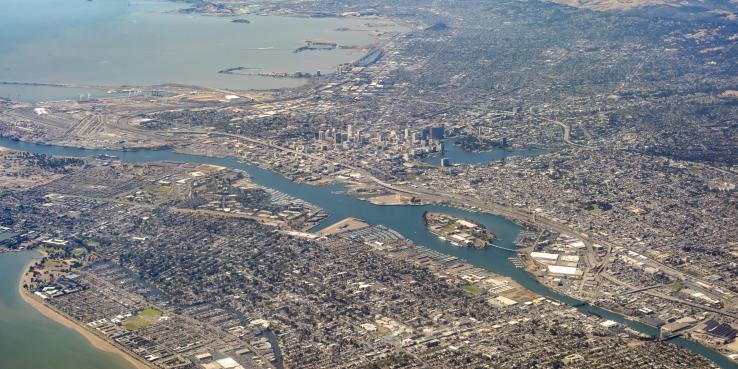The Oakland A’s decision to enter into an agreement to build a stadium in Las Vegas and the City of Oakland’s subsequent statement that negotiations have ceased regarding a new ballpark is disappointing for the thousands of A’s fans in Oakland. The news was also a blow to Oakland elected leadership, city staff, and local advocates who invested countless hours to ensure the proposed development met the economic, environmental, and social standards of Oakland and the region. Despite this setback, Oakland remains a viable city for future sports investment. And Howard Terminal, the site of the proposed ballpark, is still a strong candidate for a range of future development projects.
SPUR has consistently stated our belief that — with assurances of inclusive and sustainable development from the city and the A’s — the proposed ballpark had the potential to be a win for Oakland, serving as a catalyst for affordable housing production, long-desired transportation investments connecting the city’s downtown to the waterfront, improved regional rail infrastructure, and safer freight and passenger rail through Jack London Square. A confluence of uses at the Howard Terminal site made it both an exciting prospect and a complicated project to move at the A’s desired pace.
Ultimately, the complexity of development at the Howard Terminal site — and the impatience of the A’s in performing the due diligence required to ensure that it met the economic, environmental, and social standards of Oaklanders — were key contributors to the project’s demise. Howard Terminal is at the nexus of multiple competing uses, including port and industrial operations, freight rail, passenger rail, commercial businesses, and housing. In addition, the terminal is located close to contemplated large-scale infrastructure investments, including a possible second transbay crossing and Oakland transit hub. Because the terminal is adjacent to West Oakland and near Chinatown — communities vulnerable to residential and economic displacement — any development there requires exhaustive equity-centered engagement and mitigation to ensure beneficial outcomes for all, particularly historically marginalized neighbors.
In short, the proposed ballpark project required the project sponsor and lead agency to have a clear vision of desired outcomes and authentic alignment of multiple interests to ensure success. It required commitment to current and future Oakland residents.
The A’s commitment to those residents became increasingly illusive. The team was clear at the outset that Howard Terminal was a last-ditch effort, after decades of attempts, to rebuild its stadium — to go big or go to Vegas. The A’s need to move quickly compromised the team’s ability to engage in authentic negotiations with the Port of Oakland, community organizations, and shipping, housing, and other interests. The team’s urgency muddied the water in an increasingly challenging development environment of rising interest rates and a feared recession.
Despite its disappointment, Oakland did gain from this experience. The efforts of Oakland’s elected leaders, city staff, and local advocates have laid the groundwork for future development at Howard Terminal and visions for sports in Oakland. Passionate community dialogue during the ballpark project negotiations and in response to the recent Las Vegas purchasing agreement news demonstrates that Oakland remains a strong sports market that should not be dismissed because of the A’s departure. Oakland is ripe with opportunities for inclusive growth.The city is actively engaging a WNBA team and exploring permanent stadiums for the Oakland Roots and Soul soccer teams and is eager to repurpose the Oakland Coliseum.
Oakland community advocates and leaders were clear with the A’s about their desire to build a sports stadium that reflected community benefits and development financing best practices. SPUR believes it is both possible and necessary for Oakland to carry these values to the next opportunity.
